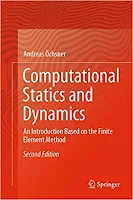Advanced Data Science and Analytics with Python
Jesús Rogel-Salazar ... 420 pages - Publisher: Chapman and Hall/CRC; (May, 2020) ... Language: English - AmazonSIN: B0883XB13B.
Advanced Data Science and Analytics with Python enables data scientists to continue developing their skills and apply them in business as well as academic settings. The subjects discussed in this book are complementary and a follow-up to the topics discussed in Data Science and Analytics with Python. The aim is to cover important advanced areas in data science using tools developed in Python such as SciKit-learn, Pandas, Numpy, Beautiful Soup, NLTK, NetworkX and others. The model development is supported by the use of frameworks such as Keras, TensorFlow and Core ML, as well as Swift for the development of iOS and MacOS applications.
Features: Targets readers with a background in programming, who are interested in the tools used in data analytics and data science + Uses Python throughout + Presents tools, alongside solved examples, with steps that the reader can easily reproduce and adapt to their needs + Focuses on the practical use of the tools rather than on lengthy explanations + Provides the reader with the opportunity to use the book whenever needed rather than following a sequential path.
The book can be read independently from the previous volume and each of the chapters in this volume is sufficiently independent from the others, providing flexibility for the reader. Each of the topics addressed in the book tackles the data science workflow from a practical perspective, concentrating on the process and results obtained. The implementation and deployment of trained models are central to the book. Time series analysis, natural language processing, topic modelling, social network analysis, neural networks and deep learning are comprehensively covered. The book discusses the need to develop data products and addresses the subject of bringing models to their intended audiences – in this case, literally to the users’ fingertips in the form of an iPhone app.
Advanced Data Science and Analytics with Python enables data scientists to continue developing their skills and apply them in business as well as academic settings. The subjects discussed in this book are complementary and a follow-up to the topics discussed in Data Science and Analytics with Python. The aim is to cover important advanced areas in data science using tools developed in Python such as SciKit-learn, Pandas, Numpy, Beautiful Soup, NLTK, NetworkX and others. The model development is supported by the use of frameworks such as Keras, TensorFlow and Core ML, as well as Swift for the development of iOS and MacOS applications.
Features: Targets readers with a background in programming, who are interested in the tools used in data analytics and data science + Uses Python throughout + Presents tools, alongside solved examples, with steps that the reader can easily reproduce and adapt to their needs + Focuses on the practical use of the tools rather than on lengthy explanations + Provides the reader with the opportunity to use the book whenever needed rather than following a sequential path.
The book can be read independently from the previous volume and each of the chapters in this volume is sufficiently independent from the others, providing flexibility for the reader. Each of the topics addressed in the book tackles the data science workflow from a practical perspective, concentrating on the process and results obtained. The implementation and deployment of trained models are central to the book. Time series analysis, natural language processing, topic modelling, social network analysis, neural networks and deep learning are comprehensively covered. The book discusses the need to develop data products and addresses the subject of bringing models to their intended audiences – in this case, literally to the users’ fingertips in the form of an iPhone app.


